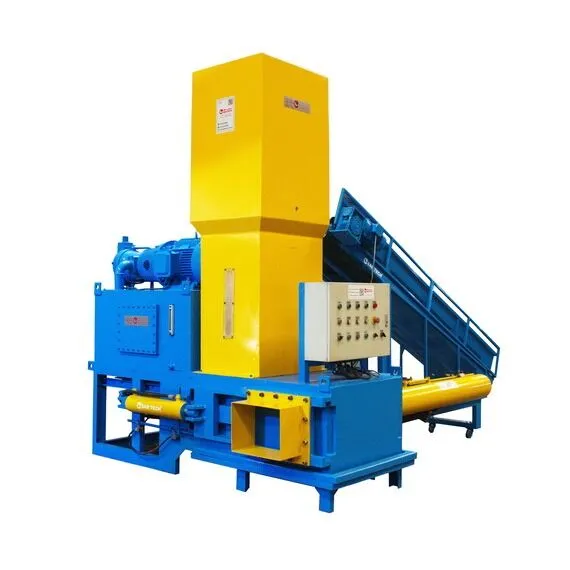In the world of recycling, efficiency is key to profitability and sustainability. Among the various tools and machines that support the recycling process, the aluminium scrap baler stands out as an indispensable asset. By compressing loose aluminium scrap into dense, manageable bales, this equipment significantly improves the handling, transportation, and storage of recyclable material, thereby boosting overall recycling efficiency.
Aluminium is one of the most recycled metals globally due to its high value and ability to be recycled indefinitely without losing quality. Efficient processing of aluminium scrap not only conserves natural resources but also reduces energy consumption and greenhouse gas emissions compared to producing aluminium from raw ore. Given the economic and environmental importance, recycling operations seek technologies like aluminium scrap baler to streamline their workflows.
The Challenge of Handling Aluminium Scrap
Aluminium scrap typically comes in a variety of forms—discarded cans, manufacturing offcuts, automotive parts, and construction debris. In its loose state, aluminium scrap is bulky, awkward to store, and expensive to transport. The irregular shapes and lightweight nature of aluminium scrap further complicate manual handling and processing.
These challenges increase operational costs, slow down recycling throughput, and limit the volume of scrap that can be stored on-site. Efficient compaction of aluminium scrap into standardized bales solves many of these problems by reducing volume, stabilizing the material, and making it easier to stack and transport.
Role of Aluminium Scrap Balers in Recycling
An aluminium scrap baler is designed specifically to compress scrap metal into compact bales. The process involves loading the scrap into a chamber where hydraulic rams apply tremendous pressure to crush and bind the material into dense blocks. These bales typically have uniform size and weight, which simplifies logistics downstream.
By transforming loose scrap into manageable units, the baler delivers several key advantages to recycling facilities:
- Volume Reduction: Compaction reduces the volume of aluminium scrap by up to 85%, freeing up valuable storage space and enabling more material to be stored within the same footprint.
- Enhanced Transport Efficiency: Standardized bales optimize space in trucks and shipping containers, lowering transportation costs and carbon footprint.
- Improved Handling and Safety: Bales are easier to move with forklifts and cranes, reducing manual labor and workplace hazards associated with loose scrap.
- Streamlined Sorting and Processing: Uniform bales facilitate automated handling and processing equipment further along the recycling chain.
Features That Boost Recycling Efficiency
Modern aluminium scrap balers incorporate advanced features that maximize recycling efficiency:
- High Hydraulic Pressure: Powerful hydraulic systems enable deep compaction of even dense or irregular scrap, creating tightly packed bales that resist deformation.
- Automated Operation: Programmable controls and sensors optimize baling cycles, improving throughput and reducing operator fatigue.
- Robust Construction: Heavy-duty steel frames and wear-resistant components ensure durability under constant use and harsh environments.
- Safety Systems: Emergency stops, safety interlocks, and protective guards protect workers during operation.
Together, these features allow recycling plants to maintain steady processing rates, lower energy consumption per ton of scrap handled, and minimize downtime.
Environmental and Economic Benefits
Efficient aluminium scrap baling contributes positively to both environmental sustainability and business profitability. Volume reduction decreases the number of transport trips required, cutting fuel consumption and emissions. Dense bales also reduce dust and contamination risks, protecting the quality of scrap material.
From an economic perspective, higher bale density increases the value of each shipment by maximizing payload capacity. Reduced handling time and labor costs further improve operational margins. Additionally, reliable baler performance minimizes repair expenses and extends equipment lifespan, protecting capital investment.
Best Practices for Optimizing Baler Use
To fully realize the benefits of an aluminium scrap baler, facilities should implement best practices such as:
- Regular Maintenance: Scheduled inspections and servicing keep hydraulic and mechanical components in peak condition, preventing breakdowns.
- Proper Scrap Preparation: Removing contaminants and sorting scrap before baling improves bale quality and downstream processing.
- Operator Training: Skilled operators can optimize feed rates, adjust compression settings, and quickly identify issues.
- Monitoring Bale Quality: Consistently dense, well-formed bales reflect optimal baler performance and recycling efficiency.
By integrating these practices, recycling centers can maximize throughput while maintaining safety and quality standards.
Conclusion
An aluminium scrap baler is a powerful tool that transforms the recycling process by enhancing efficiency at multiple stages. Its ability to drastically reduce scrap volume, improve handling and transportation, and streamline operations makes it essential for modern recycling facilities. Investing in high-quality baling equipment and maintaining it properly pays dividends through cost savings, increased productivity, and environmental benefits.
As global focus on sustainability intensifies, technologies like aluminium scrap balers will continue to play a critical role in shaping efficient, profitable, and eco-friendly recycling systems. By embracing such innovations, recycling businesses can not only improve their bottom line but also contribute meaningfully to resource conservation and a cleaner planet.







